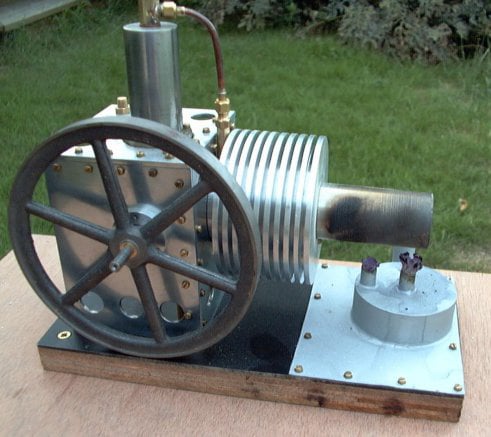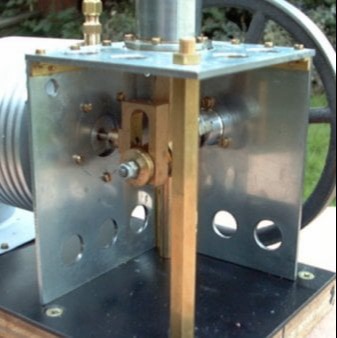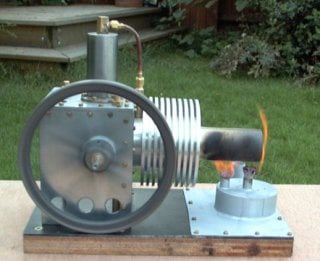
A simple Stirling Engine
This engine was built as a Gamma configuration which meant it had separate power piston and displacer piston assemblies.
The power piston was made from 25mm diameter brass and it was machined to run in a cast iron cylinder.
The displacer piston assembly was all stainless steel to reduce heat transfer as much as possible.
This engine design used a 'V' configuration to separate the displacer piston and power piston by 90 degrees. The main benefit of this arrangement was that both pistons could share the same crank pin and still be the required 90 degrees out of phase.

